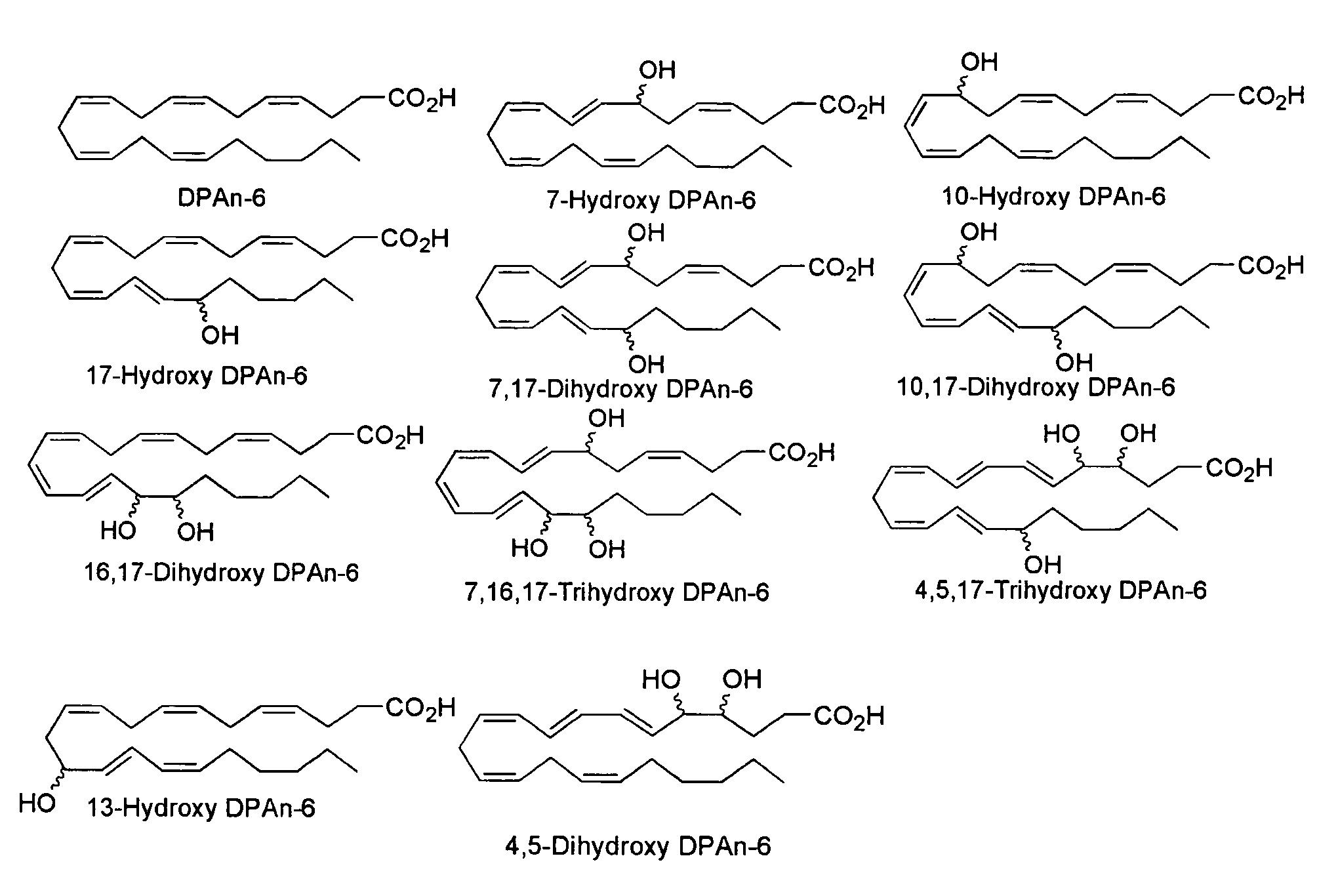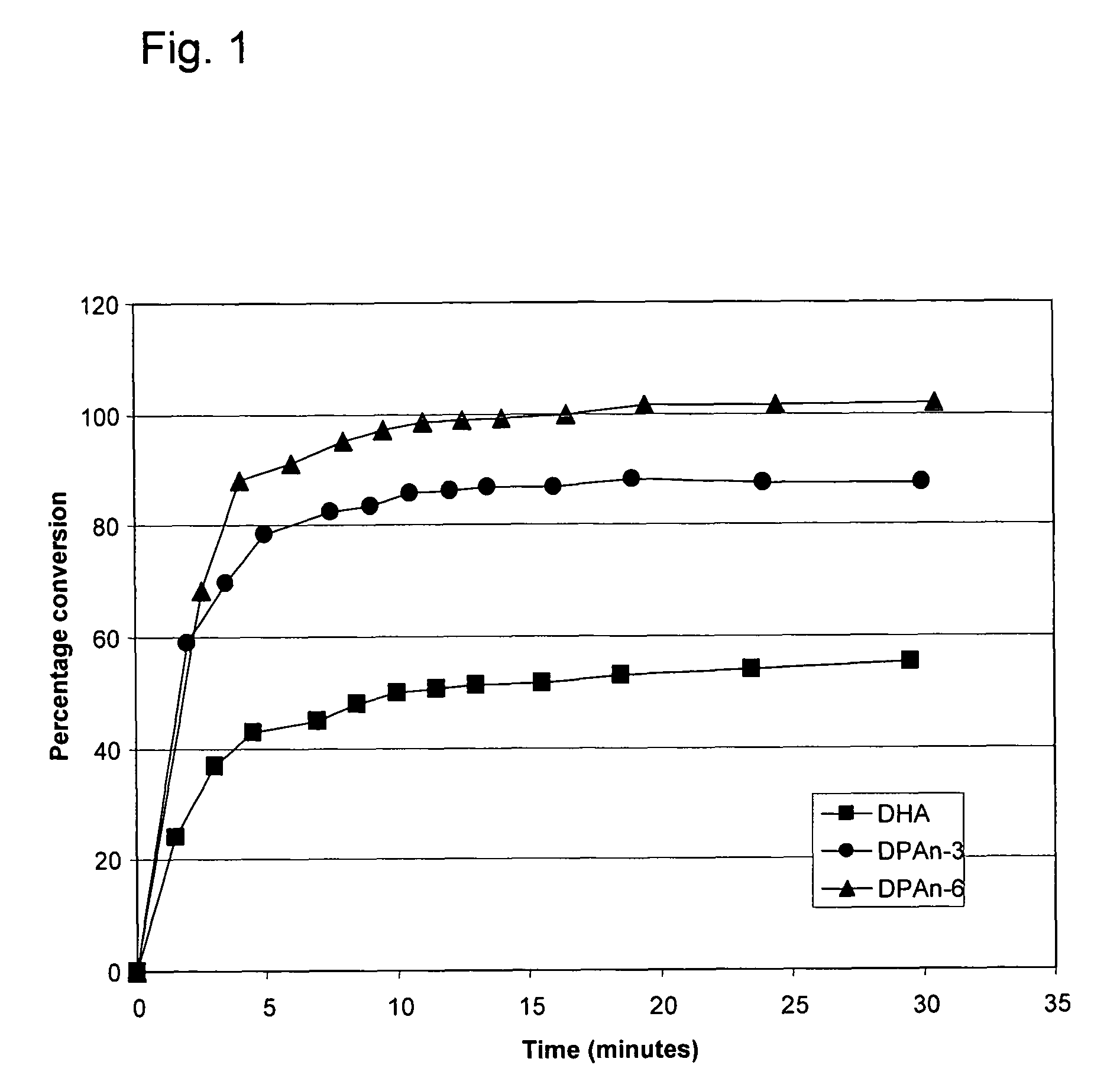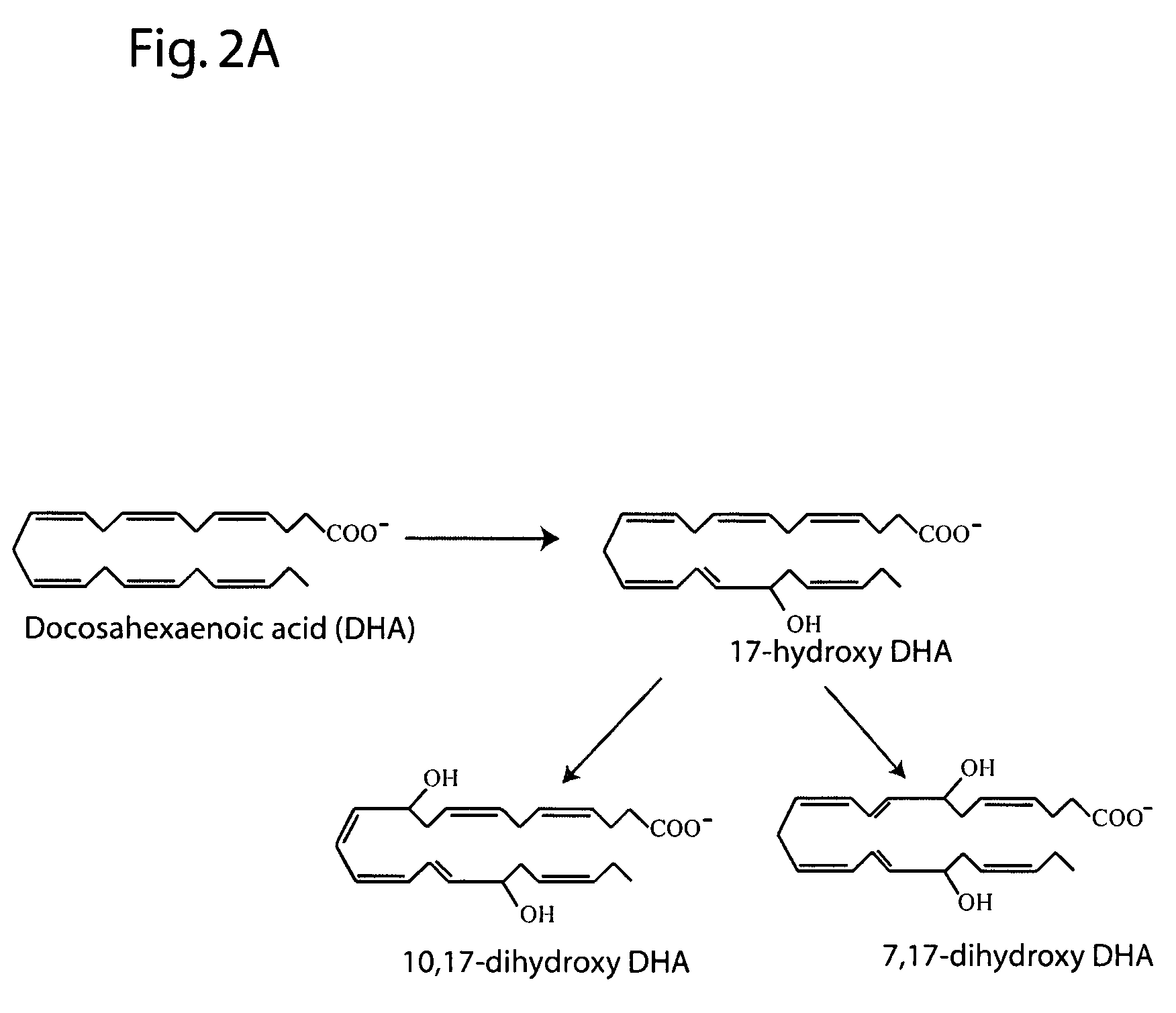Oxylipins from long chain polyunsaturated fatty acids and methods of making and using the same
a technology of polyunsaturated fatty acids and oxylipins, which is applied in the field of making and using the same, can solve the problems of toxic addition of free fatty acids to the cultures, poor production of seaweed biomass,
- Summary
- Abstract
- Description
- Claims
- Application Information
AI Technical Summary
Benefits of technology
Problems solved by technology
Method used
Image
Examples
example 1
[0196]The following example demonstrates that DPAn-6 can be completely converted to a mono-hydroxy diene derivative by 15-lipoxygenase, and is more efficiently converted than either of DPAn-3 or DHA.
[0197]Soybean 15-lipoxygenase (Sigma-Aldrich, St. Louis, Mo.) at a final concentration of 4 μg / ml was mixed into 100 μM solutions of DHA, DPAn-6, or DPAn-3 (NuChek Prep, Elysian, Minn.) in 0.05M sodium borate buffer, pH 9.0, and the reaction mixtures were incubated at 0° C. Appearance of the mono-hydroxy conjugated diene derivatives of the fatty acids was monitored through absorbance at 238 nm. Conjugated diene products were quantified using an extinction coefficient of 28,000 M−1cm−1 (Shimizu et al; Methods in Enzymology, 1990 Vol 187, 296-306). As shown in Example. 1, 100% of the DPAn-6 was efficiently converted to its conjugated diene derivative under these conditions, whereas about 85% of DPAn-3 and 50% of DHA were converted to their respective conjugated diene (mono-hydroxy) derivat...
example 2
[0198]The following example describes the major 15-lipoxygenase products of DHA.
[0199]DHA (100 μM, NuChek Prep, Elysian, Minn.) was incubated with 15-LOX (4 μg / ml) in 0.05M sodium borate buffer, pH 9.0, at 4° C. with vigorous stirring for 30 min. Reaction products were reduced with NaBH4 (0.45 mg / ml) and then extracted on a solid phase C-18 cartridge (Supelco Discovery DSC-19) using anhydrous ethanol for elution. Reaction products were analyzed by LC / MS / MS using an Agilent 1100 Series High Performance Liquid Chromatography (HPLC) Instrument (San Paulo, Calif. USA) interfaced with an Esquire 3000 ion trap mass spectrometer equipped with electrospray ionization source (Bruker Daltonics, Billerica Mass. USA). The HPLC was carried out on a LUNA C18(2) column (250×4.6 mm, 5 micron, Phenomenex, Torrance Calif., USA) using a mobile phase consisting of 100 mM ammonium acetate in 30% methanol in water with an acetonitrile gradient increasing from 48 to 90% over 50 min (0.4 ml / min flow rate)....
example 3
[0201]The following example indicates the major 15-lipoxygenase products of DPAn-6 and demonstrates production of mono- and dihydroxy derivatives analogous to those produced from DHA (see Example 2).
[0202]DPAn-6 was treated with 15-lipoxygenase and analyzed by LC / MS / MS under the conditions described in Example 2. FIG. 3A depicts the structures of the mono- and dihydroxy reaction products of this DPAn-6 / 15-LOX reaction. FIG. 3B depicts MS / MS spectrum of the mono-hydroxy product showing molecular ion (m / z of 345) and fragments characteristic of 17-hydroxy DPAn-6. The inset shows the UV spectrum of this compound with the expected peak at 237 nm characteristic of a conjugated diene. FIGS. 3C and 3D depict MS / MS spectra of the two dihydroxy products with molecular ions (m / z of 361) and fragments characteristic of 10,17-hydroxy DPAn-6 (3C) and 7,17-dihydroxy DPAn-6 (3D) indicated. The UV spectrum insets show the expected triplet peaks at 270 nm characteristic of a conjugated triene for 10...
PUM
| Property | Measurement | Unit |
|---|---|---|
| body weight | aaaaa | aaaaa |
| body weight | aaaaa | aaaaa |
| body weight | aaaaa | aaaaa |
Abstract
Description
Claims
Application Information
 Login to View More
Login to View More - R&D
- Intellectual Property
- Life Sciences
- Materials
- Tech Scout
- Unparalleled Data Quality
- Higher Quality Content
- 60% Fewer Hallucinations
Browse by: Latest US Patents, China's latest patents, Technical Efficacy Thesaurus, Application Domain, Technology Topic, Popular Technical Reports.
© 2025 PatSnap. All rights reserved.Legal|Privacy policy|Modern Slavery Act Transparency Statement|Sitemap|About US| Contact US: help@patsnap.com



